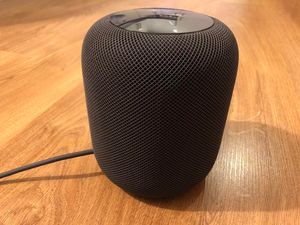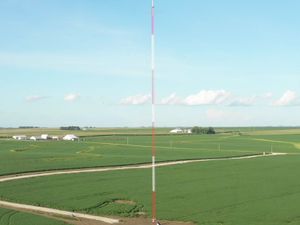Review: Apple HomePod chooses sound over intelligence
HomePod focusses on the ‘speaker’ rather than the ‘smart’.

Smart speakers have become one of the most talked-about gadgets of today – a fact that is likely to continue now that Apple has entered the market with HomePod.
But HomePod is not a smart speaker as we know it. Despite inevitable comparisons with Amazon Echo and Google Home, Apple says its speaker is all about the music.
Nonetheless, HomePod does also house Apple’s artificial intelligence assistant Siri, meaning this is still a smart speaker by definition.
But at £319 – significantly more than the Echo, Home and others, and questions hanging over Siri’s ability to be a smart home controller, where does the HomePod sit in the smart speaker landscape?
Design and sound

The soft, spongy mesh that encases the device is pleasing to touch and look at, a good change from the clunky plastic or synthetic surfaces some speakers tend to be wrapped in.
And underneath that mesh is the key reason the HomePod is priced as high as it is.
The speaker houses a large high-excursion woofer, which powers the deep bass. This is combined with a seven-tweeter array, enabling sound to be beamed in all directions and at a wide range to compliment the bass.
The results are brilliant. HomePod is potent and powerful, yet tracks retain their clarity and range even as you raise the volume.
The spatial awareness technology in the device also plays a part here. The speaker quickly identifies where in a room it has been placed and alters the distribution of sound as needed.
For example, if it senses a wall nearby, HomePod will fire what it deduces to be background sounds, a clapping audience and backing instruments for example, at the wall, while sending the key sounds – vocals and main instruments – towards you.
This makes audio sound bigger, and does a very good job of filling the room.
There’s no comparison with other smart speakers – Apple has several times the technology in place than the Echo or Google Home – but even a Sonos One dedicated speaker is outstripped by HomePod to our ear.
Experience

There are no such issues for HomePod, which uses AirPlay technology to link with an iOS device when you place it close to the speaker – similar to the AirPods pairing process.
This sparks a short process of a couple of taps as HomePod links to your iPhone or iPad and captures the Apple Music, Apple ID and WiFi information it needs. It is smart and seamless and a welcome introduction to the device.
Once up and running, Siri is able to handle basic tasks and questions – the voice recognition is one of the best we’ve encountered in picking up commands over loud music – but before long the gaps in ability start to appear.
Locked in

The heart of the issue is that HomePod is too locked in to Apple’s ecosystem. Having Apple Music as the only available music service is a major turn-off, particularly if you’re a home of varied playlists and contrasting music service users, as many busy smart speaker houses tend to be. It’s just inconvenient.
It’s not just a lack of access to your Spotify playlists that’s an issue – HomePod appears from our testing to have sporadic access to podcasts, with some playing and others not being found.
The device also can’t play live radio, and has some other annoying blind spots – including not being able to set more than one timer at a time, a big miss for kitchen smart speaker users, and crucially something that both the Echo and Home do.
Also in the kitchen, the device is unable to find and recite recipes, another common feature on other speakers.
The device is also not yet able to pair together for another HomePod in a stereo set-up, or link together a network of HomePods throughout a home. Both features are coming later this year, but these are already key features of other existing high-end speakers.
Users can create notes and set reminders linked to the Apple native apps on their iPhone or iPad, but for the price it’s not unfair to expect more robust smart features.
One positive is the Home app – the software used to group smart home accessories that can be controlled by HomePod – thanks to its simple interface.
But Siri as a voice assistant is, in truth, too limited to be at the heart of a smart speaker.
It lacks the wide range of unique skills that Amazon’s Alexa can offer, and it lacks the enormous brain of Google Assistant, powered by Google search.
Verdict

As a home speaker, it is the best in class, offering an audio listening experience full of depth and better than anything else in its price range and probably a few levels above it too.
However, if you’re someone looking to enter the smart speaker market for the first time and thought Apple would be the one to nail it, you need to look elsewhere and save money.
The checklist to be compatible with HomePod is too long for a product like this – the need to be an iOS user, with a fair amount of spare cash and not already linked to a music subscription service other than Apple Music is too much to expect of the average consumer.
There is a valid argument that Apple Music has enough paying subscribers that Apple has a big enough market for HomePod and the device will be an inevitable success, but HomePod does still feel on some levels like a missed opportunity to seize control of rapidly growing smart speaker market.





